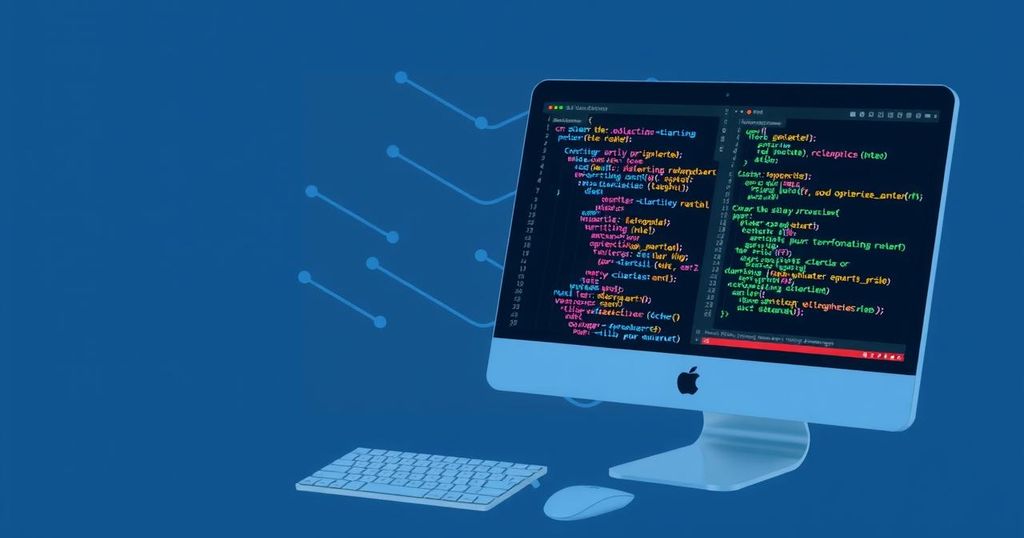Python Trends to Anticipate in 2025
Python stands resilient as a leading programming language in 2025, seamlessly bridging various domains like AI, web development, and IoT. Its simplicity and robust libraries cater to both novice programmers and experienced developers. Key trends include its dominance in data science, growth in web frameworks, integration with IoT, advancements in machine learning, performance optimizations, and educational integration, ensuring its ongoing relevance in diverse technological landscapes.
As we step into 2025, Python solidifies its status as a leading programming language, continuously adapting to technological advancements. Its versatility spans numerous fields, including artificial intelligence, data science, web development, and IoT. The simplicity and readability that have endeared Python to millions of developers remain untouched, making it a reliable choice for both budding coders and seasoned professionals. Emerging libraries and frameworks are reshaping the landscape, enabling innovation at an unprecedented pace, from sophisticated data analyses to the seamless operation of cutting-edge applications across sectors.
The relevance of Python is largely attributable to its robust community and the continuous contributions that enhance its libraries, including Pandas and TensorFlow, which are foundational in data science and AI. As asynchronous programming and microservices architecture rise in popularity, Python’s frameworks like Django and Flask facilitate the creation of scalable web applications, further cementing its role in modern web development.
Moreover, the Internet of Things (IoT) benefits remarkably from Python’s straightforward coding style, which simplifies the interactions between various devices. The proliferation of IoT technology heralds increased adoption of Python, as businesses look for efficient ways to manage complex networks of connected devices. Additionally, the landscape of machine learning continues to evolve, with libraries such as PyTorch and updates to existing frameworks enhancing Python’s functionality in AI.
Despite historical performance criticisms, Python is embracing advancements like Just-In-Time (JIT) compilation through platforms like PyPy, promising improved execution speeds that bolster its viability in performance-sensitive applications. Educational institutions, recognizing Python’s accessibility, are increasingly incorporating it into their curriculums, ensuring a steady stream of new talent into the programming world, eager to harness Python’s capabilities in various domains.
As 2025 approaches, the vibrancy of Python’s ecosystem thrives, presenting countless opportunities for developers and businesses. With its embedded presence in industries from tech to healthcare, relying on Python is a strategic move to stay ahead in a digital era. Thus, whether you’re an experienced coder or a newcomer to the field, Python’s ongoing transformation guarantees a landscape filled with innovation and growth initiatives waiting to be explored.
Python has proven to be not just a passing trend but rather a cornerstone of modern programming due to its infinite adaptability. As we look towards 2025, numerous advancements in technology are reshaping how businesses and developers use Python. The rise of artificial intelligence, machine learning, and the expansion of cloud technologies positions Python at the forefront of innovation. Its user-friendly syntax makes it an ideal choice for both beginners and professionals, reinforcing its relevance in various industries, including finance, healthcare, entertainment, and education.
In summary, Python’s landscape is rife with potential as we move into 2025. The language’s simplicity, growth in educational contexts, and burgeoning libraries empower it as a key player in fields like AI, web development, and machine learning. As industries evolve, so too does Python, remaining a powerful tool for innovation and problem-solving. By embracing these trends, developers can harness Python’s full potential to navigate tomorrow’s technological challenges and opportunities. Whether you’re becoming established in tech or embarking on your coding journey, Python remains a beacon guiding you to success.
Original Source: www.simplilearn.com




Post Comment